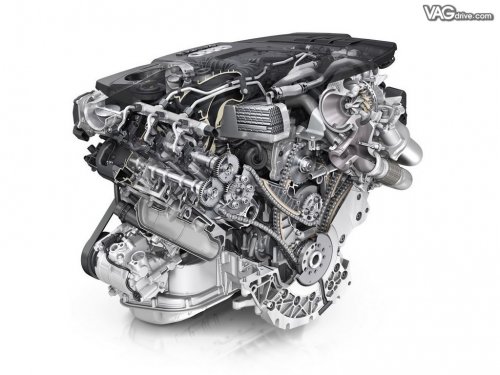
3.0 TDI engine - why does the 3.0 V6 TDI found in VW and Audi have such a bad reputation? We're checking it out!
Content
The 1.6 TD, 1.9 TDI and 2.5 TDI R5 designs are recognized as some of the best diesels to date. The development of the automotive industry and changing emission standards have made new projects a natural fit. In response to the average opinions about the 2.5 TDI V6, the 3.0 TDI unit was created. Is it better than its predecessor?
VAG 3.0 TDI engine - technical data
The three-liter unit with 6 cylinders in the V system has been installed on Audi and Volkswagen cars, as well as the Porsche Cayenne since 2004. Initially, it was typical only for high-end cars, over time it was also present in lower segments, such as the Audi A4. Engine blocks were covered with two heads with a total number of valves 24. The 3.0 TDI engine had several power options - from 224 hp. through 233 hp up to 245 hp In the top version of the Audi A8L, the unit was designated CGXC and had a power of 333 hp. The most common unit designations are BMK (installed in the Audi A6 and VW Pheaton) and ASB (Audi A4, A6 and A8). This engine has also powered SUVs such as the Audi Q7 and VW Touareg.
What characterizes the 3.0 TDI engine?
In the described engine, the designers used Common Rail direct injection based on Bosch piezoelectric injectors. They do not cause big problems, but you should pay attention to the quality of the fuel being poured.
The most popular topic related to this unit is the design of the timing drive. In initial versions (for example, BMK) it worked with support for 4 chains. Two were responsible for the gear drives, the third for their interaction, and the fourth for the oil pump drive. In the facelift version, the number of chains was reduced to two, but the complexity of the main timing drive increased.
In addition, engineers have applied a system to reduce the temperature of the processed exhaust gases in the 3.0 TDI engine. It works by connecting an exhaust gas cooler to a low temperature coolant circuit. A variable geometry turbocharger and intake manifold flaps are now standard, providing better exhaust aftertreatment.
The 3.0 TDI engine also had an interesting oil pump design. He worked at different levels of intensity depending on the person's workload. A diesel particulate filter was also standard on newer versions.
The 3.0 TDI engine and its timing - why is it so problematic?
If the engine and gearbox units did not cause much trouble (if only they would change the oil in the engine and gearbox in time), then the timing drive was a very expensive element. The design of the engine forces it to be disassembled during the work of a mechanic related to the replacement of chains and tensioners. The cost of spare parts starts from 250 euros, and work is often 3 and more. Why so much? Most of the replacement time is spent dismantling the drive unit. Therefore, it is not surprising to spend 20 or 27 man-hours on this (depending on the version). In practice, professional workshops cope with such a replacement in about 3 days.
Is it possible to avoid frequent timing changes in a 3.0 TDI engine?
Let's not deceive ourselves - spending 6000-800 euros only on a timing drive is a lot. The 3.0 TDI V6 can actually be a lot of trouble, so be sure to pay attention to the condition of the unit before buying. The best option is to have a complete service and repair history, but such proof is hard to come by. Therefore, before buying, you can listen to the chains for signs of stretching, which is manifested by a characteristic rattle.. If you are already replacing the timing drive, choose a comprehensive service. Also, change the oil every 12000-15000-30000 kilometers, not once every XNUMX as the manufacturer advises.
Should I buy a car with a 3.0 TDI engine - summary
The only safe option for these units is to buy a car with a verified history and from a trusted seller. Vehicles with this engine can be purchased for as little as 2500 euros, but timing replacement alone is almost 1/3 of the purchase price. is it worth it? Many interested people stop looking for such a car, fearing the high cost of repairs. And there is nothing strange in this. However, there are instances that have been taken care of by the previous owners and they can be operated for more than 400000 kilometers.
